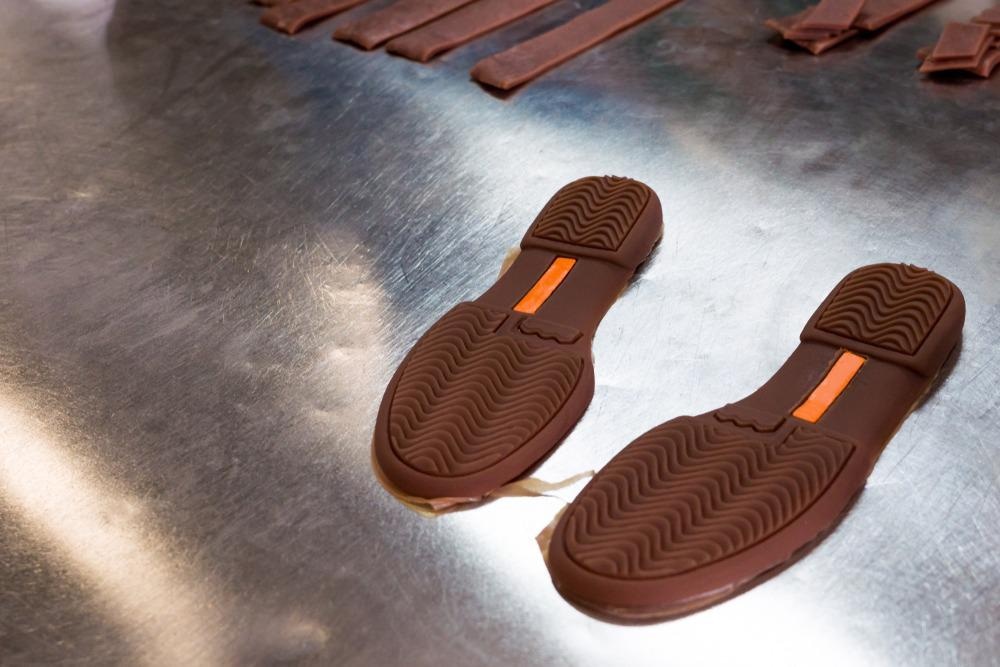
Image Credit: armmit/Shutterstock.com
For some time, the Fused Deposition Modeling (FDM) 3D printing sector has been attempting to develop a dependable means for printing rubber-like filaments into desired shapes. The effort to establish a method has been hard for several reasons, mainly because very elastic filament materials are susceptible to jamming an extruder. Engineers at the Chinese company Atomstack have created an entirely new system deposition system – the first thermoplastic rubber 3D printer.
The Atomstack Thermoplastic Rubber 3D Printer
To fix this and other issues, the key to Atomstack’s Cambrian thermoplastic rubber filament 3D printer is a 2.85 mm direct drive extruder that avoids jamming – the main sticking point in thermoplastic rubber development.
With an effective system in place, Atomstack engineers then created unique thermoplastic rubber filament with a substantial elasticity and durability that was effective for correctly and dependably printing almost any end-use rubber-like product. TPR has both rubber and plastic qualities, which makes it very useful for printing bouncy and flexible items.
The new thermoplastic rubber technology has a streamlined aluminum alloy structure that keeps control cables out of the way and supplies the rigidity required for precise printing. The Cambrian also has a glass hotbed platform that enhances printing quality and avoids warping by warming the extruded filament.
An LCD touchscreen on the machine lets users accurately manage the platform, extruder, and printing parameter temperatures. The touchscreen can also provide print previews, facilitating an intuitive user experience.
The novel thermoplastic rubber filament 3D printer comes with two interchangeable extruders: the specially engineered 2.85 mm extruder and a 1.75 mm extruder for standard filaments such as PLA, TPE, and PETG. Having both capabilities unlocks a massive range of applications. It allows users to develop affordable and high-quality rubber items, including shoes, sporting goods, and medical devices.
Cambrian is a commercially available printer designed for the average person to use. Assembly is relatively quick, and it does not require any tools beyond the included wrenches. The machine’s software does need configuration, and the extruder must be properly leveled.
The Cambrian is available through Kickstarter in two tiers, the Pro ($339) and Max ($379). The Kickstarter campaign has raised more than 15 times its initial goal.
The World's First Desktop Rubber 3D Printer
Video Credit: ATOMSTACK/YouTube.com
Thermoplastic Rubber, Thermoelastics and Thermoplastic Resins
Natural and synthetic rubbers are made by entirely different processes and have very different chemical compositions.
Importantly, natural rubbers cannot be 3D printed. To bolster its structural integrity and elasticity, natural rubber must go through vulcanization. This process prevents rubber from returning to a fluid state, which is necessary for 3D printing. An additive manufacturing system requires a filament or heat so it can be liquified. However, rubber filament heating causes it to burn, which is why it has not been possible to develop a 3D printer that uses genuine, natural rubber.
Unlike latex from a rubber tree, thermoplastic rubber is a synthetic material from the polymer SBS (Styrene-butadiene-styrene), which is considered a tertiary “block copolymer”. Critically, thermoplastic rubber can be remolded and recycled since it does not have the cross-linked bonds that natural rubber has so that it can be reformed several times.
Thermoplastic rubber and thermoplastic elastomer are considered thermoplastics. While thermoplastic rubber is manufactured out of a tertiary block copolymer, a thermoplastic elastomer is typically made from a quaternary block polymer such as Styrene Ethylene Butylene Styrene (SEBS).
Thermoplastics created from polyurethane and ethylene are also regarded as a thermoplastic elastomer. Incidentally, thermoplastic elastomer has superior chemical and abrasion resistance compared to thermoplastic rubber and, as a result, is often used in the automotive industry.
Considered “flexible filaments”, thermoplastic rubber and thermoplastic elastomer have been considered too soft for additive manufacturing. Every time they passed through a 3D printer’s extruder, they did not assemble correctly. An extruder on a conventional 3D printer uses a “pushing string effect”, and when a highly flexible filament gets pushed towards the nozzle, it bends and jams. This problem has been solved using direct drive extruders such as the one seen in Cambrian’s new thermoplastic rubber filament 3D printer.
In addition to flexible filaments, flexible resin may also be used to create rubber-like items. Flexible resins are ideal for the development or prototyping of highly intricate flexible parts such as custom gaskets, grips, or wearables. Resins are also useful for adding ergonomic qualities to a composite object.
After it is printed, flexible resins have the same feel as rubber: they can compress and “bounce back” to an original form. For individual users and small operations, a principal issue with resins is that they are typically only made for specialty printers.
Resources and Further Reading
Atomstack. Atomstack Announces Launch of Cambrian - The World's First 3D Printer for Thermoplastic Rubber. [Online] Available at: https://www.prnewswire.com/news-releases/atomstack-announces-launch-of-cambrian---the-worlds-first-3d-printer-for-thermoplastic-rubber-301200810.html
Obudho, B. 3D Print Rubber: Is Rubber 3D Printing Possible?. All3DP. [Online] Available at: https://all3dp.com/2/3d-print-rubber-is-rubber-3d-printing-possible/
Kmasa. The 101 on Thermoplastic Rubber (TPR). [Online] Available at: https://www.kmasa.co.za/
British Plastics Federation. Thermoplastic Elastomers TPE, TPR. [Online} Available at: https://www.bpf.co.uk/plastipedia/polymers/thermoplastic_elastomers.aspx
Disclaimer: The views expressed here are those of the author expressed in their private capacity and do not necessarily represent the views of AZoM.com Limited T/A AZoNetwork the owner and operator of this website. This disclaimer forms part of the Terms and conditions of use of this website.